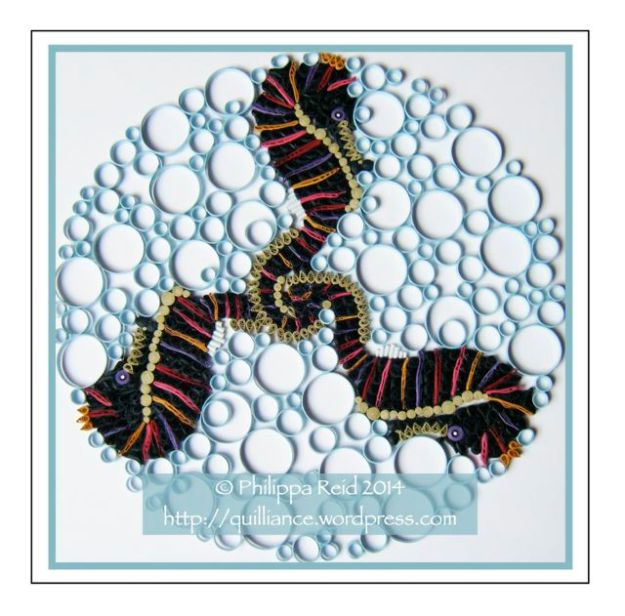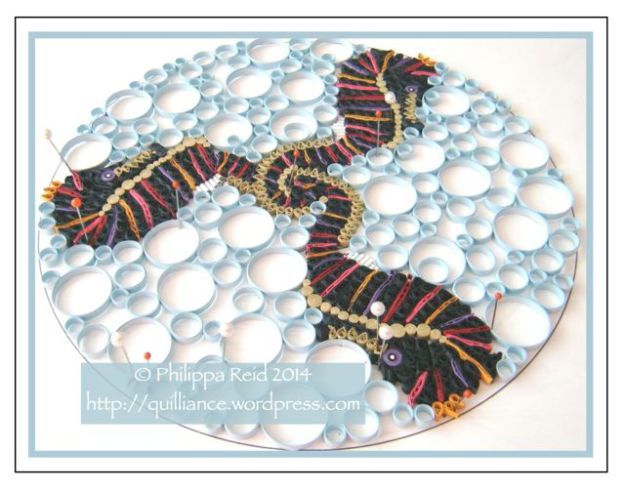As a quiller, I am always on the look-out for spiral designs in all their forms, and am interested in the way that spirals can interlock together. On a visit to Petworth House (a stately home in Southern England) a while ago, I saw a lovely pair of Chinese vases with handles moulded in the form of colourful sea horses, and my eye was immediately drawn to the spiral formation of their tails. This encouraged me to try quilling some sea horses in fanciful colours. Having also seen various circular plate designs featuring a trio of fish with their bodies forming the radii of a circle, I decided to try and create something similar featuring sea horses. This idea enabled me to explore the way in which their tails would coil together.
I began by sourcing a line drawing of a single sea horse from a children’s colouring book. I scanned this in to the Photoshop software on my computer, replicated it twice, and manipulated the resulting three identical sea horse images to form the basis of my design within a circular frame. The resulting image was printed out and placed (under clingfilm) on a mounting board into which pins could be inserted.
I spent a long time deciding on the repeating sequence of colours for the sea horses’ bodies for maximum visual impact. My idea was that the three sea horses would be set within a lattice of open ring coils, representative of bubbles under the sea. I began by quilling the sea horse whose tail appears on the top of the other two, in order to clarify the complex pattern of the interlocking section. My original idea was to create the rings for the lattice in several different shades of blue, but the process of laying the rings down loosely in position at this stage convinced me that this approach would detract from the colours of the sea horses. I therefore discarded it in favour of a lattice formed from rings made in a single shade of light blue.
The dark green sections of the sea horses’ bodies were made using a combination of closed loose coils (some circular and some shaped into diamonds) and unglued wheatears (some formed into diamonds and some left straight), for maximum visual interest. All these shapes can readily be moulded to fit into irregular spaces. The coloured stripes are all glued wheatears. The spines and crests are all teardrops. Solid pegs have been used for the chest sections, nose and eyes. 3mm strips were used throughout – chosen for their paper quality and bright, consistent colours – with wider strips for the back fins, rolled into tubes.
Here you can see the design nearing completion on the board:
With some trepidation, I managed to lift it away from the clingfilm as a single piece, and have mounted it on a plain white background … some more fantasy sea creatures to accompany my octopus!


